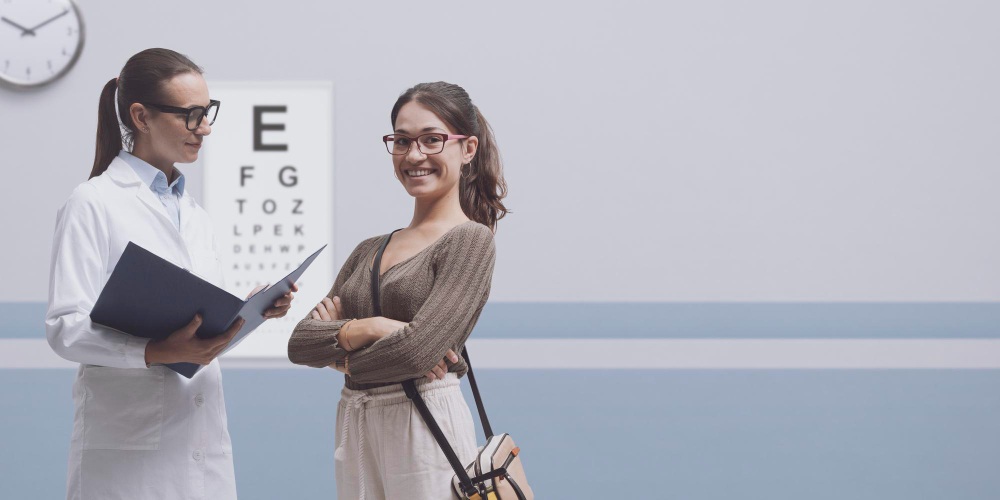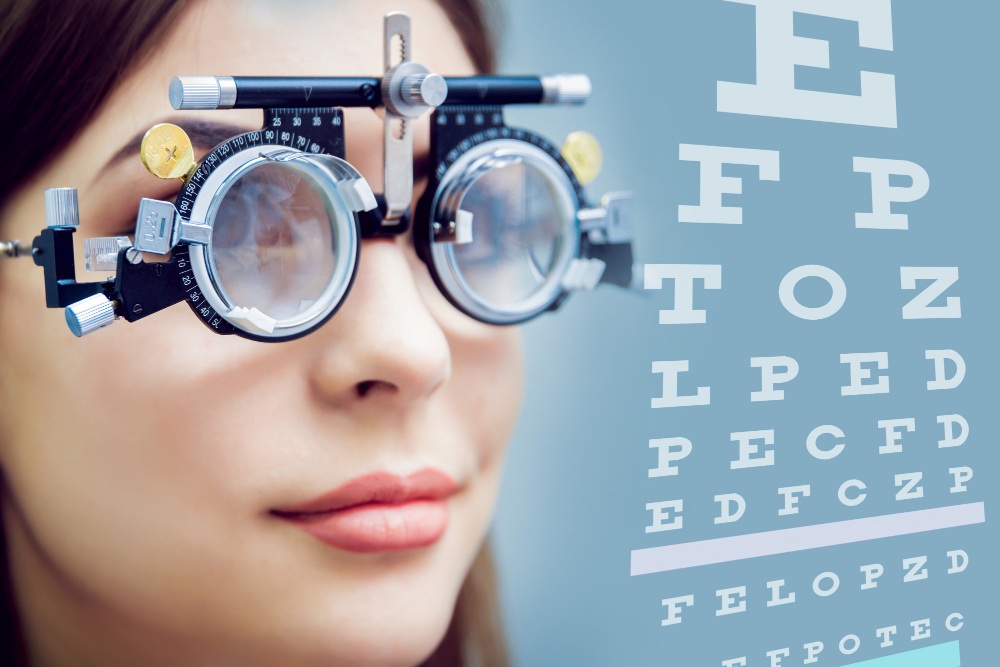
If you have never gone through an eye physical exam before, you might be feeling nervous. This is understandable because you are unaware of what will happen throughout the assessment. Once you understand how to take this exam, you will feel more confident and mentally prepared. In this blog, we are going to demonstrate the whole process so that it becomes a smooth experience for you. Let’s get started!
What Does an Eye Exam Consist of? Comprehensive Guide

Here is a complete list of the procedures and tests you will undergo during your eye exam.
1. Discussion
When you first arrive, the eye care doctors will ask about your core concerns and medical history. Apart from vision issues, they ask about your general health conditions like diabetes or hypertension as well. Moreover, they could also ask about your family history of eye diseases. This is how they get a clear picture of the whole scenario.
2. Visual Acuity Test
After the discussion, the doctor will move toward the first test, which is the visual acuity test. In this test, you have to read letters on a chart from a specific distance. This is how your doctor evaluates whether you require glasses or not.
3. Refraction Test
Now, when it is clear from the acuity test that you need to perfect your vision, the doctor performs a refraction test to determine the proper lens prescription. They use a device called a phoropter that contains different lenses. They switch between the lenses so that you can identify which lens suits your vision best.
4. Eye Alignment Test
After that, your eye doctor checks the alignment of your eyes. For this purpose, they ask you to focus on any small object, such as a pen. They will move the object slowly and ask you to maintain your focus on it. During the movement of your eyes in different directions, they will evaluate your eye alignment.
5. Stereopsis Test
To get details about your eye teaming, it is essential to go through a stereopsis test. In this test, you will wear a pair of 3D glasses and look at booklets of different patterns. The pattern usually consists of four small circles. Looking over them, you have to point out the one that looks nearer to you. If you identify it correctly, it means your eyes are perfect for detecting normal depth.
6. Tonometry
After that, your doctor will find out if your eyes suffer from any nerve damage. For this, they will measure the pressure inside your eyes and detect common eye conditions like Glaucoma. They will numb your eyes with eye drops. Then, an instrument called a tonometer will be used to make contact with your cornea and measure the pressure of fluid in your eyes.
Note: Glaucoma has no initial warnings until there is significant vision loss, so this test is crucial for detecting it on time.
6. Slit-Lamp Exam
The doctor will perform a slit-lamp exam for further health assessment of your eyes. In this test, they use a special type of microscope to examine the front structure of your eyes. This helps detect damaged cells or any other abnormalities within your eye structure.
7. Pupil Dilation Test
After evaluating the front structure, getting a view of the retina, optic nerve, and blood vessels at the back of your eyes is also important. For this purpose, you have to go through a pupil dilation test. Doctors use dilating eye drops that expand your pupil and assess all the back structures more thoroughly.
8. Visual Field Test
In some cases, doctors also perform visual field tests. In this test, they move a finger in front of you in all directions and ask you to follow it without moving your head. This test is to check the presence of blind spots in your peripheral vision as these spots also detect different eye diseases.
9. Recommendations
After performing all the tests, the eye care specialists discuss their findings and results with you. They recommend treatments and, if necessary, suggest lifestyle changes as well. Moreover, they can also ask you for follow-up appointments.
Conclusion

Now that you are clear about what happens during eye physical exams, you can visit an eye care center confidently next time. As the process is simple and painless, you must go through it frequently to address the underlying vision issues on time. This is how you can have healthy eyes for years to come!
FAQS
How often should I get a physical eye exam?
It depends on your vision needs and age. But on average, adults should have it every 1-2 years. If you are over 60 and have chronic conditions like diabetes, it is better to have more frequent checkups.
Can I drive after the eye exam?
If you have undergone a pupil dilation test or the doctor has used any numbing eye drops, it is better to avoid driving. The reason is that your eyes may be more light-sensitive, and you can face blurred vision. So, driving would be difficult for you.
Are there any side effects of eye exams?
There are minor side effects of eye exams that are temporary and vanish within a few hours. Common side effects are blurred vision and light sensitivity. However, if there is persistent discomfort, it is better to consult your eye doctor.
